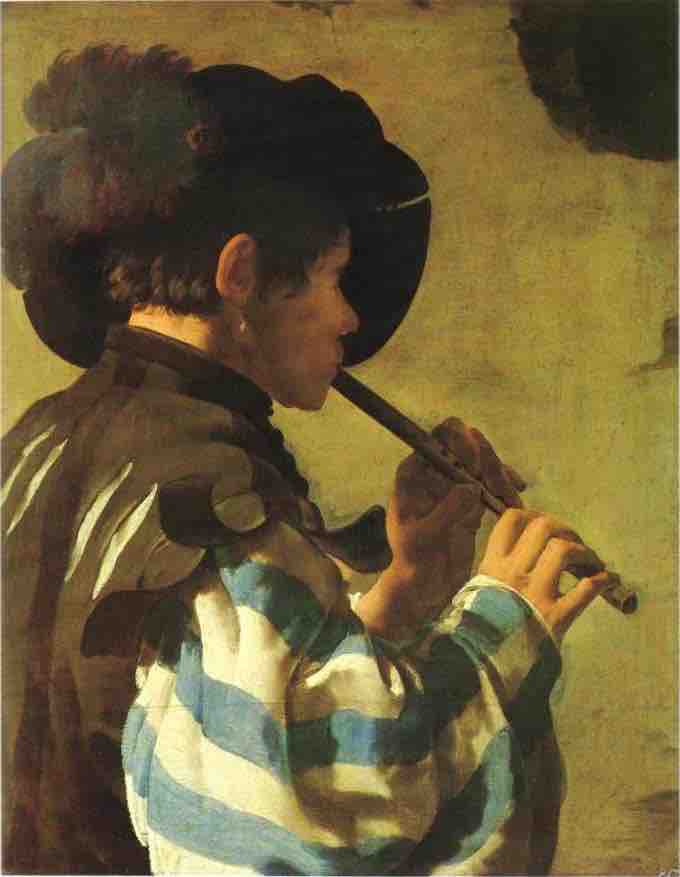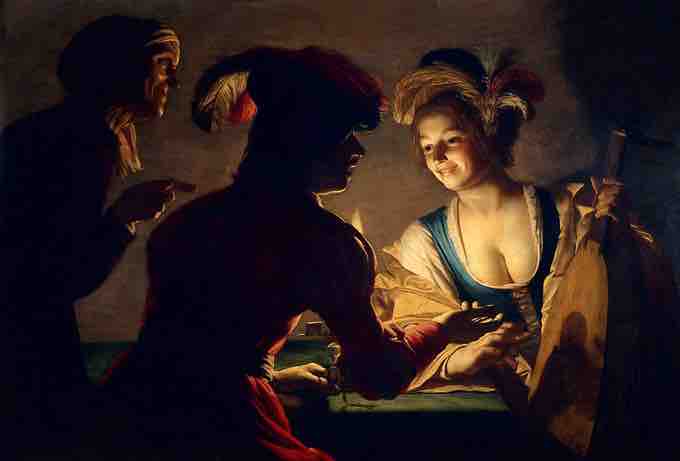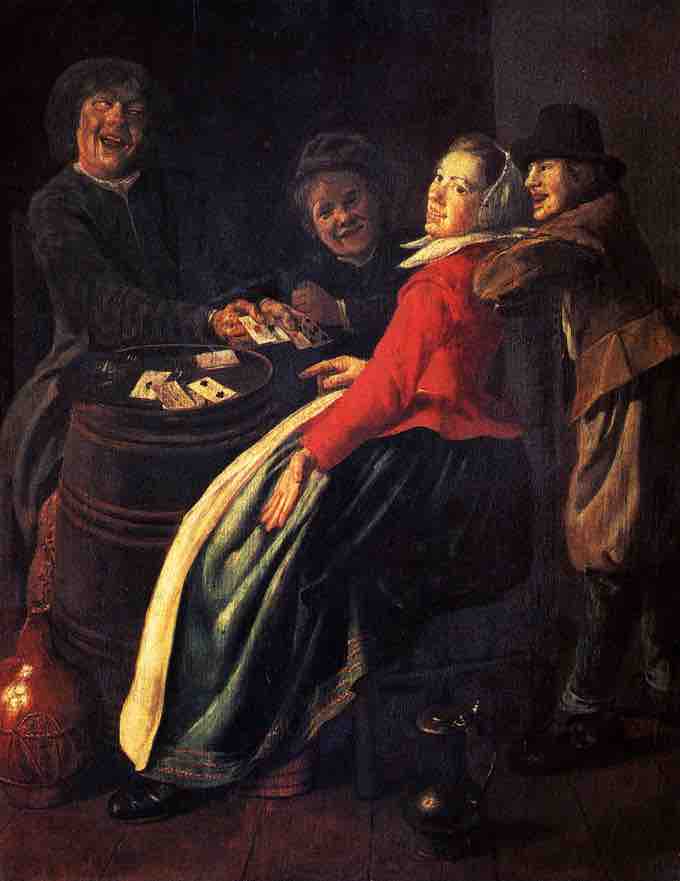The Dutch Golden Age
The Dutch Golden Age was a period in the history of Holland generally spanning the 17th century, during and after the later part of the Eighty Years' War (1568–1648) for Dutch independence. Although Dutch painting of the Golden Age comes in the general European period of Baroque painting and often shows many of its characteristics, most lacks the idealization and love of splendor typical of much Baroque work, including that of neighboring Flanders. Most work in Holland during this era, including that for which the period is best known, reflects the traditions of detailed realism inherited from Early Netherlandish painting.
A distinctive feature of the period is the proliferation of distinct genres of paintings, with the majority of artists producing the bulk of their work within one of these. The full development of this specialization is seen from the late 1620s, and the period from then until the French invasion of 1672 is the core of Golden Age painting. The Utrecht Caravaggisti Hendrick ter Brugghen and Gerrit van Honthorst, as well as Frans Hals and Judith Leyster, were genre painters of the Dutch Republic. Their work generally depicted taverns and other scenes of entertainment that catered to the tastes and interests of a growing segment of the Dutch middle class.
ter Brugghen
Hendrick Jansz ter Brugghen (1588—1629) was a Dutch painter and a leading member of the Dutch followers of Caravaggio, or the Dutch Caravaggisti. Ter Brugghen began painting at the age of 13, studying with Abraham Bloemaert, a history painter trained in Mannerism. Around 1604, ter Brugghen traveled to Italy to expand his skills like many of his Dutch counterparts. While in Rome, he could have been in direct contact with Caravaggio. He certainly studied his work, as well as that of his followers, known as the Italian Caravaggisti. Upon returning to the Dutch city of Utrecht, he worked with Gerard van Honthorst, another member of the Dutch Caravaggisti.

Flute Player by ter Brugghen, 1621
Ter Brugghen, with Gerard van Honthorst, imported Caravaggio's techniques from Italy in the early 17th century.
Ter Brugghen's favorite subjects were half-length figures of drinkers or musicians, but he also produced larger-scale religious images and group portraits. He carried with him Caravaggio's influence, and his paintings have a strong dramatic use of light and shadow, as well as emotionally charged subjects. Though he died fairly young at age 41, his work was well received and highly influential in his lifetime.
The Concert by ter Brugghen (1627), 99.1 x 116.8 cm, National Gallery, London
Some of ter Brugghen's favorite subjects were half-length figures of drinkers or musicians, with a strong dramatic use of light and shadow in the style of Caravaggio.
Van Honthorst
Gerard van Honthorst (1590—1656) was born in Utrecht and also studied under Abraham Bloemaert. In 1616, Honthorst also traveled to Italy and was deeply influenced by the recent art he encountered there. Honthorst returned to Utrecht in 1620 and went on to build a considerable reputation, both in the Dutch Republic and abroad.
Honthorst briefly became a court painter to Charles I in England in 1628. His popularity in the Netherlands was such that he opened a second studio in The Hague, where he painted portraits of members of the court and taught drawing. Honthorst cultivated the style of Caravaggio and had great skill at chiaroscuro, often painting scenes illuminated by a single candle. Apart from portraiture, he is known for painting tavern scenes with musicians, gamblers, and people eating.

The Matchmaker by Gerard van Honthorst, 1625
This painting demonstrates Honthorst's use of chiaroscuro, a style made popular by Caravaggio.
Hals
Frans Hals the Elder (c. 1582—1666) was most notable for his loose painterly brushwork, a lively style he helped introduce into Dutch art. Hals was also instrumental in the evolution of 17th century group portraiture. He is perhaps best known for his portraits, which were primarily of wealthy citizens and prominent merchants like Pieter van den Broecke and Isaac Massa. He also painted large group portraits for local civic guards and the regents of local hospitals. His pictures illustrate the various strata of society: banquets or meetings of officers, guildsmen, local councilmen from mayors to clerks, itinerant players and singers, gentlefolk, fishwives, and tavern heroes. In his group portraits, such as the The Officers of the St Adrian Militia Company, Hals captures each character in a different manner. Hals was fond of daylight and silvery sheen, in contrast to Rembrandt's use of golden glow effects.
The Officers of the St Adrian Militia Company by Frans Hals, 1633
This is the second painting for the Cluveniers, St. Adrian, or St. Hadrian civic guard of Haarlem, by Frans Hals; today it is considered one of the main attractions of the Frans Hals Museum.
Leyster
Judith Jans Leyster (1609—1660) was one of three significant women artists in Dutch Golden Age painting. The other two, Rachel Ruysch and Maria van Oosterwijk, were specialized painters of flower still lifes, while Leyster painted genre works, a few portraits, and a single still life. Leyster largely gave up painting after her marriage, which produced five children. Leyster was particularly innovative in her domestic genre scenes. In them, she creates quiet scenes of women at home, which were not a popular theme in Holland until the 1650s.

A Game of Cards by Judith Leyster
Leyster's subject matter was similar to other genre painters of the period, with the exception that she tended to focus on female subjects.
Although well-known during her lifetime and esteemed by her contemporaries, Leyster and her work were largely forgotten after her death. Leyster was rediscovered in 1893 when the Louvre purchased what it thought was a Frans Hals painting, only to find it had, in fact, been painted by Judith Leyster. Some historians have asserted that Hals may have been Leyster's teacher due to the close similarity between their work; for example, Leyster's The Merry Drinker from 1629 has a very strong resemblance to The Jolly Drinker of 1627—28 by Hals.